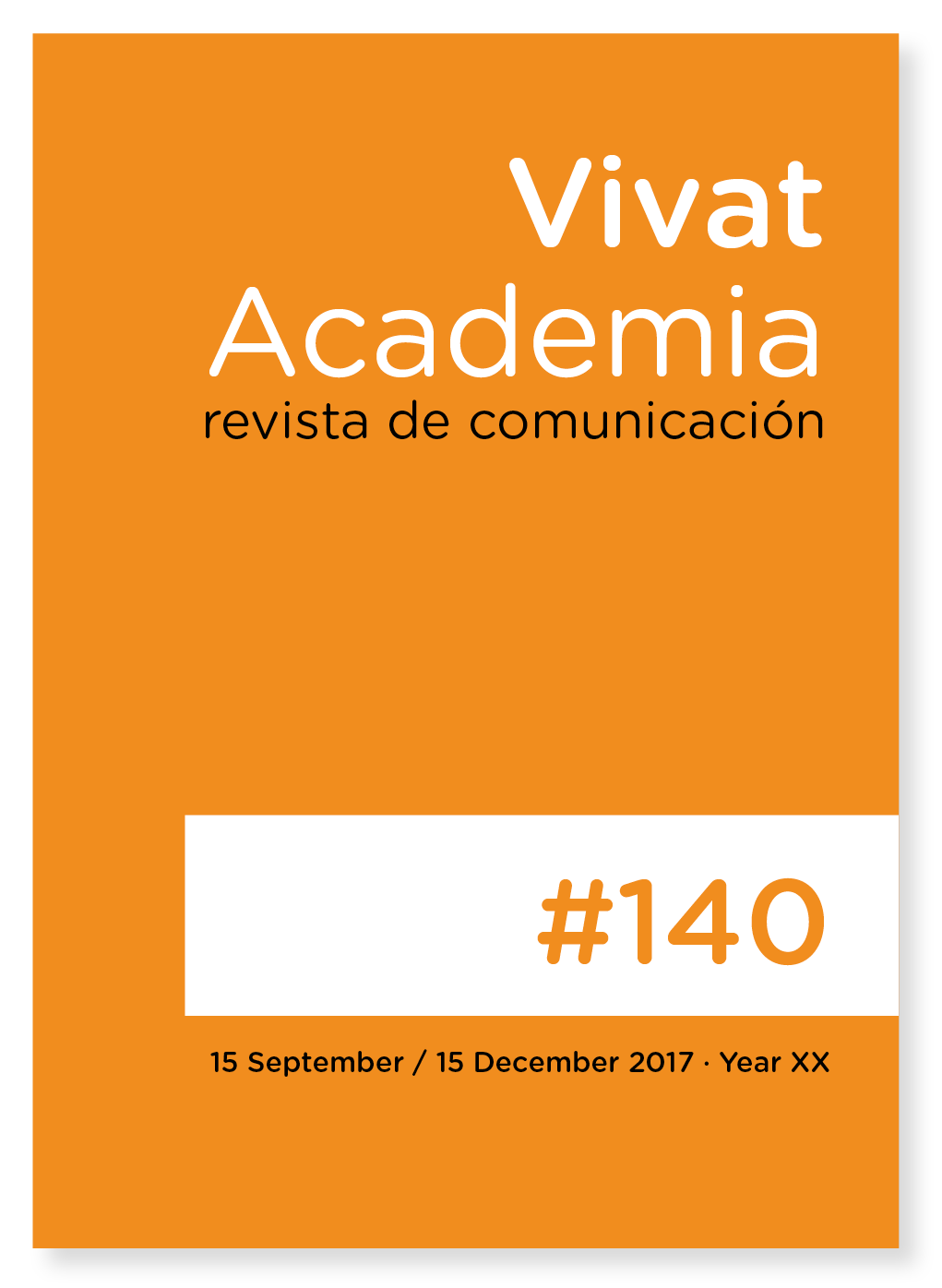Cinematographic uses of Edward Hopper's work. Reclassification and complementary readings
Main Article Content
Abstract
Conscious of the interrelationship that the artistic disciplines manifest between them, it is understandable the permeability that a field of expression such as cinema observes during its still short life cycle, assimilating influences, suggestions, languages, expression systems, textures, colors or impressions that refer to past or present moments of the History of the Art. Although we do not discover anything new by showing this syncretism between cinema and, in particular, painting, we would like to focus this proposal on the relationship established between the canvases of the American Edward Hopper (1882-1967) and cinematographic art. In fact, it is Hopper's poetics that is identified by the sensations he stimulates in the spectator, because of the tense calm that he senses where, in reality, there can be from a latent mystery to a complete banality. From these experiences the cinematographic field feeds heavily, an expert in the deception of making us see what does not exist and to hide what is before our eyes, just like many of Hopper's creations. This correlation, back and forth, known the artist's fondness for the cinema, presents, in addition, the particularity of transcending the scene of classic American cinema to arrive fresh to the XXI century, where it still remains valid in examples that we will try to dissect.
Downloads
Article Details
References
Barter, J. (2007). Nighthawks: Transcending Reality, en Edward Hopper (catálogo de exposición). Londres: Thames & Hudson.
Bornay, E. (2009). Las historias secretas que Hopper pintó. Barcelona: Icaria.
Bostwick D. E. (2007). Hopper’s Foundation, en Edward Hopper (catálogo de exposición). Londres: Thames & Hudson.
Bourget, J. L. ( 2012). La esencia de lo americano. Caimán. Cuadernos de Cine, especial número 1 (15), 23-25.
Debecque - Michel, L. (1993). Hopper. Madrid: Debate.
Doss, E. (2012). Nighthawks y el cine negro. Caimán. Cuadernos de Cine, especial número 1 (15), 26-28.
Frodon, J. M. (2012). Hopper Hitchcock. La promesa de un relato. Caimán. Cuadernos de Cine, especial número 1 (15), 18-19
Hobbs, R. (1987).Edward Hopper. Nueva York: Harry N. Abrams.
Hobbs, R. (2006). Hopper. Madrid: Skira y Unidad Editorial.
Hobbs, R. (2012).Hopper (catálogo de exposición). Madrid: Museo Thyssen Bornemisza.
Kranzfelder, I. (1995). Edward Hopper. 1882-1967. Visión de la realidad. Colonia: Taschen.
Levin, G. (1995).Edward Hopper. A Catalogue Raisonné (3 volúmenes). Nueva York: Whitney Museum of American Art.
Levin, G. (1980).Edward Hopper. The Art and the Artist. Nueva York: Whitney Museum of American Art.
Levin, G. (1998).Hopper’s Places. Berkeley y Los Ángeles: University of California Press.
Maire, F. (2012).Viajes de ida y vuelta. Caimán. Cuadernos de Cine, especial número 1 (15), 10-12.
Mamunes, L. (2011). Edward Hopper Encyclopedia. Jefferson: McFarland & Company.
Monterde, J. E. (2012). Un pintor en la era del cine. Caimán. Cuadernos de Cine, especial número 1 (15), 6-8.
Muñoz, L y Muñoz, A. (En prensa). Puntos de confluencia entre Edward Hopper y el cine noir norteamericano. Lo invisible en lo visible, en Actas del XII Congreso de Novela y Cine Negro: La globalización del crimen. Salamanca.
O’doherty, B. Hopper’s Windows. Conferencia pronunciada en el Whitney Museum of American Art de Nueva York el 26 de septiembre de 2013.Puede escucharse en http://whitney.org/WatchAndListen/Artists?play_id=890.
O’doherty, B. (2012). Palabra e imagen: un pacto mutuo, en Edward Hopper. Pinturas y dibujos de los cuadernos personales. Madrid: La Fábrica y Museo Thyssen Bornemisza.
Ortiz-Villeta, Á. (2012). Hopper y el cine musical. Caimán. Cuadernos de Cine, especial número 1 (15), 20-22
Renner, R. G. (2002). Edward Hopper. 1882-1967. Transformaciones de lo real. Colonia: Taschen.
Roberts, E. E. (2007). Painting the Modern Cape: Hopper in Truro, en Edward Hopper (catálogo de exposición). Londres: Thames & Hudson.
Schmied, W. (1995). Edward Hopper. Portraits of America. Múnich y Nueva York: Prestel.
Souter, G. (2007). Edward Hopper. Light and Dark. Nueva York: Parkstone International.
Troyen, C. (2007). The Sacredness of Everyday Fact: Hopper’s Pictures of the City, en Edward Hopper (catálogo de exposición). Londres: Thames & Hudson.
Wells, W. (2007). Silent Theater: The Art of Edward Hopper. Londres: Phaidon Press.
Zunzunegui, S. (2012). El cinema según Edward Hoppe. Caimán. Cuadernos de Cine, especial número 1 (15), 14-17.





